Glen
Moderator
Part VI
The bellicose tone of the Malthusian forces made the United States concerned. While America had not participated as a nation in any foreign wars, the nation had a strong military tradition in the small but effect Legion as well as the Navy and Marines. However, President Martin Roosevelt based off his and his brother's experiences as volunteers in the Global War knew that there might be a need to rapidly expand America's manpower, however America had never had anything like conscription as many of the world powers had, and so the Call system was born.
The Call was a voluntary system unlike conventional conscription methods. The first step was asking able bodied men to participate every weekend in voluntary basic training and physical fitness regimens in programs set up across the nation. The next part would be activated only in the event of development of hostilities. Should there be a need for a rapid increase in military forces beyond what spontaneous volunteering was able to meet, the government would send out the Call to Arms to those able bodied men, letting them know they were needed. While under no legal obligation to heed the Call, there was a strong moral imperative to heed the call once made. The Call would continue to go out to men until enough accepted. What would happen should the Call ever be utterly exhausted without meeting the need of military manpower was an open ended question.
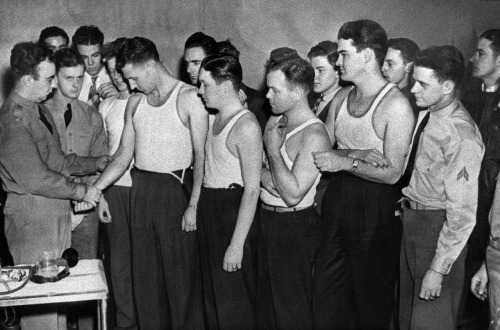
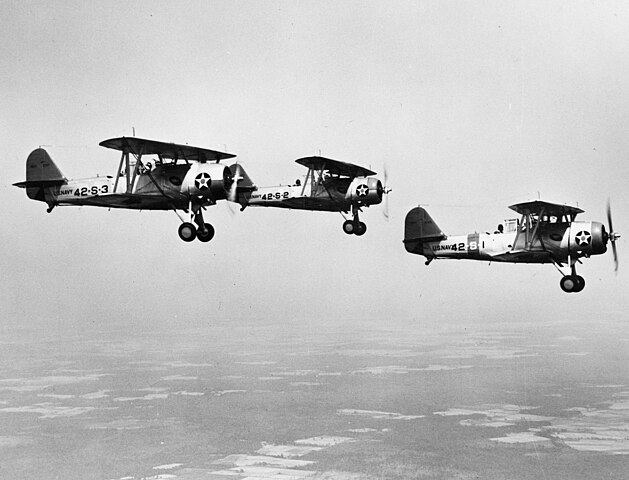
The Malthusian Nations sought to starve out the British Isles by prowling the trade routes to the heart of the British Empire. The failure of Black Friday to cripple Britain meant that a full on blockade couldn't be done.
The United States of America historically had been a major exporter of foodstuff to the Brtitish Isles (as well as the Dominion) and President Martin Roosevelt and the American people refused to allow the Malthusian Forces to ban them from their right as a free nation to continue their peaceful trade. Congress approved US Naval forces to provide protection to US merchantmen traversing the Atlantic.

The bureaucracy of Chuen China had worked for several years to incorporate Malthusian measures into the rule of the Chuen Empire, fearing a reprise of the terrible famines that had struck the nation in the years prior to the Population War. Ironically, a similar but less draconian Malthusianism had sprung up in Chuen's rival to the south, the United States of China. At the onset of the Population War, Chuen China was ruled by a bureaucrat led regency and it was the Regency that targeted the Qing Manchuria for attention first, along with its ally Joseon Dynasty in Korea, seeing the resources of the less populous region to the Northeast as being a reasonable start to acquiring resource security for the Empire. However, when the United States of China refused to ratify the Malthusian Manifesto and broke from the Malthusian International Congress, the Chuen saw the opportunity to once again strike out against their southern rival and seek to acquire its agricultural areas, thus pulling all the Chinas into the Population War.
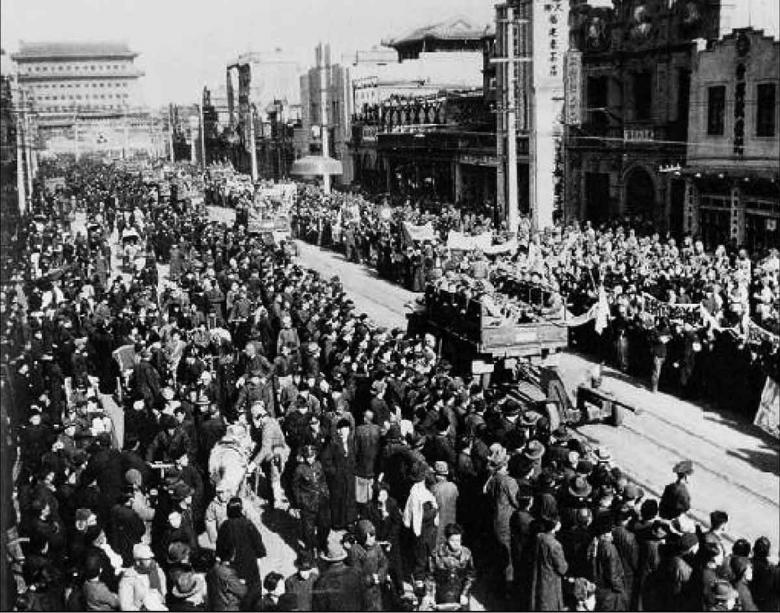
The Clash of the Chinas during the Population War highlighted a strange fact in the War in the East, and that was the ubiquity of some form of Mandarin Chinese in several of the opposing nations. While dominant in traditionalist Chuen China, it also was spoken by higher officials in Manchuria since the Qing diaspora there, partially displacing Manchurian (not shown below), and was usually the default common language in the south even after the formation of the United States of China due to the multiplicity of well respected and vibrant tongues spoken in the South. Influenced by the US Constitution and it's Bill of Rights, the United States of China's Constitution explicitly forbade the federal government to adopt any one language as the 'official' language of China, though several of the Chinese states within the USC recognized their own version of 'Chinese' as their official spoken language, much as Quebec and other Francophone dominant states in the US had done. However, it was common at the federal level for the common language to be Mandarin given the history of the Chinas, and while there was no official spoken tongue, the USC did standardize an official written script for the United States of China, which was possible given its ideographic base. This may explain why the United States of China became an early leader in the practice of printing the dialogue on the images of their Kinees, and having local actors record in the local dialects over the scenes in the kinees. This would be especially prominent in the Population War propaganda films. Incidentally, the most common form of Chinese in the expatriot population in the United States of America would be noted to be Yue (sometimes referred to as Cantonese).

The Kingdom of Siam had developed it's own brand of Buddhism as much influenced by Deism via the United States of China (and ultimately America) as it was the traditions of Siam and of classical Buddhism. In addition, Siam had enjoyed close trade relations with the United States of China and the British Empire. So it was no surprise when Siam refused to join the Malthusian Manifesto nor any of the efforts of the Malthusians against the USC once it defected from the Malthusian camp. Siam found itself thrown into the Population War, fighting off advances from United Nationalities of India forces from the West, and Spanish forces from Spanish Indochina. Siam had enjoyed relative peace until the Population War, but would go on to acquit itself well in the conflict once supplies and advisors began to arrive.

The Dutch East Indies had enjoyed the fruits of Liberalism in the 19th century, and while the Netherlands sometimes was heavy handed in exerting control over their sphere in the islands, they also eradicated a number of odious practices such as slavery and cannibalism. While in the first half of the 19th Century the Netherlands had mostly taken from the wealth of the East Indies, in the second half and into the 20th Century, Dutch governance followed a policy of infrastructure development, and matched with the wealth of natural resources the East Indies enjoyed a boom in prosperity. The Dutch East Indies had also been spared from any threat during the Global War due to being surrounded by lands that were either neutral or Entente.
However, the strategic situation was more complicated in the Population War. The only close territories under the control of allies of the Netherlands was French Greater Australia and the Spanish Philippines. The population and resources of the French Australias were meager, but the Spanish Philippines could provide some support to Dutch East Indies forces.
The British Australias on the other hand had a reasonable sized population that included a number of men who could be called to service. Thus the fight for the Dutch East Indies was joined, led mostly by the Australians on behalf of the British Empire.

As part of the British Australian advance on the Malthusian Dutch holdings in the East Indies, Britain's stalwart ally, Portugal, allowed for staging out of Portuguese Timor - Combined Imperial British and Portuguese forces rapidly took Dutch Timor and continued via ship to advance northward.
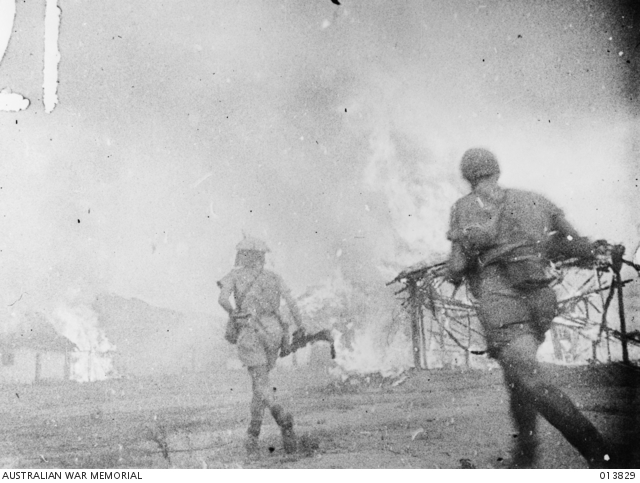
The aged Ottoman sultan had in the years leading up to the Population War started to slip into senility. However, his ministers covered this up at the time, aided and abetted by the Malthusians who had come to power in the legislature. While massive in size, much of the Ottoman holdings were arid wilderness or outright desert, making the burgeoning population of the prosperous Empire a growing concern, especially in the minds of ethnic Turkish leaders as many of the other ethnicities in the empire had enjoyed higher growth rates than the Ottoman Turks. Therefore many leaders among the Turks thought well of Malthusian measures to curb the growth rate of the ethnicities of the Empire. They also saw with the onset of the Population War a chance to strike against the Empire's old enemy, Russia, who had declared for the British. Ever since the Global War the Ottomans had maintained a modern military, with ample funding in the previous decades from their oil wealth. In addition, some Ottomans saw the war as an opportunity to gain more arable lands and eyed with hunger the territories of those neighbors who dared side with the British and Russians, such as Hellas and Persia.

Madagascar had enjoyed prosperity under the dual sphere of Britain and France, up until the strife of the Population War. Unfortunately for the island nation, the sudden break between the former major members of the Entente saw Madagascar become a battlefield in the global conflagration, especially given the strong French Naval presence on the island, which had become the strongest supporters of the Sartre regime. The British defended their position on the island. One minor consequence of this was the sharp spike in vanilla prices globally.

The Population War didn't just tear away the Crown Jewel of India from the British Empire, but also formented conflict in South Africa. While a vital part of the British Empire, the diverse South Africa had been a source of instability throughout the 19th Century, both from Bantu Speaking tribes and Afrikaners. Many Afrikaner speaking people, fearing the growing majority of Bantu tribes in the region had become enamoured of the Dutch and their early embrace of Malthusianism. On the other hand, English speaking people of British firmly supported the Crown and rejected Malthusian policies. The outbreak of the Population War and the issuance of the Malthusian Manifesto saw South Africa erupt into civil war, with the Afrikaners and their Griqua allies fighting to throw out the British with aid from the Malthusian nations, whereas the English speaking South Africans and Bantu speaking allies fought to hold South Africa within the Empire.

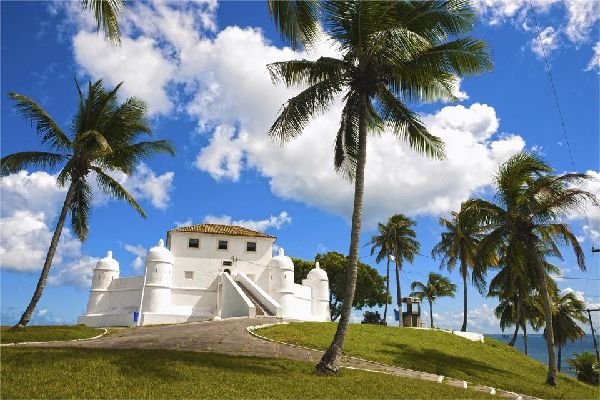
The United States Congress tried to keep the USA out of the Population War, but under the leadership of President Martin Roosevelt also would not back down from exercising America's right to freely travel the seas - including engaging in commerce with the British Empire. The Malthusian navies, on the other hand, were not willing to allow American merchant convoys travel unmolested through the North Atlantic to the British Isles. After several attacks on American shipping, thankfully under guard by American forces, the USA was ready to declare war on the forces of the Malthusian Manifesto. The final tipping point came with the invasion of Bahia by the Malthusian Confederation of the Equator and Brazil. The US Navy held a port there and refused their combined naval forces access to the Bay rather aggressively. The United States Congress accepted President Martin Roosevelt's request for a declaration of war on December 19, 1934.
The 1935 Western European Theatre saw some of the fiercest fighting as the British and their German Allies (led by the dashing German Crown Prince) strove to keep the Bremen Corridor open against the French and Lowlanders to the West and the Scandinavians to the East (not to mention the Malthusian German insurgents, though many of these were to the East in Brandenburg). Despite having to fight on two fronts, the British had more advanced armor and air assets and a martial tradition that no other nation could match.
The Malthusians kept to their word and executed any opposing forces captured in the conflict. While the British and Germans did sometimes take prisoners (a deliberate decision to encourage troops under Malthusian control to surrender rather than fight to the last) there were many cases where the British and Loyalist Germans gave no quarter, and more often than not their superiors turned a blind eye to this 'deviation from policy'.
The Dutch Malthusians were the first to use chemical weapons in the Population War, though France would soon outstrip them. While not the first time that chemical weapons had been used in the history of warfare, this was the largest use. Initial weapons were Chlorine based including Chlorine, CDO (Carbon Dichloride Oxide), DS (Dichlorodiethyl Sulfide) & Geranious Gas, but then later the French introduced Bremenite, Sartrite, & Parisite which were far more dangerous.

Map of the Population War 1935
Red - Malthusian Manifesto Members
Blue - Human League Members
Purple - Nations in Civil Turmoil

Human League
United States of America
Dominion of Southern America
Anti-Malthusian Mexico
Pro-British Moskito
United Provinces of South America
Bahia
British Empire
Portuguese Empire
Sultanate of Morocco
Ethiopian Empire
Kongo
Pro-League Madagascar
Loyalist Southern Africa
Loyalist German Empire
Kingdom of Italy
Roman Republic
Empire of Austria-Bohemia
Empire of Prussia-Poland
Kingdom of Hellas
Kingdom of Wallachia-Moldavia
Russian Empire
Persian Empire
Trucial Sheikhdoms
Mahra Sultanate
Durrani Empire
Kingdom of Gurkha
Empire of Manchuria
Empire of Siam
Sultanate of Brunei
Ezochi
Empire of Japan
Dominion of the British Australias
Malthusian Manifesto
Malthusian Mexico
New Granada
Confederation of the Equator
Brazil
Republic of Rio Grande do Sul
Scandinavian Empire
Pro-Malthusian German Empire
Dutch Empire
Kingdom of Belgique
Second Republic of France
Switzerland
Spanish Empire
Kingdom of Naples
Kingdom of Sicily
Republic of Hungary
Ottoman Empire
Muscat Sultanate
Pro-Malthusian Madagascar
Pro-Malthusian Southern Africans
United Nationalities of India
Chuen China
Joseon Empire of Korea
The 19th Century had been good to the Sultanate of Morocco under the Alawite Dynasty. By the end of the 19th century Morocco had formed it's own national legislature composed of the House of the Amghars and the Makhzen. Clashes with the modernizing Ottoman Empire on Morocco's Eastern Border had led to Morocco's own military modernization, mostly drawing on advisors from the United States, British Empire, and German Empire. One of the main pillars of Moroccan Foreign Policy was the close relations with the United States of America, seen as a rich trade partner and an ally far enough away to not be tempted to encroach on Moroccan sovereignty.
Sultan Mohammed V came to the throne of Morocco in 1930 and continued the successful policies of his forefathers, and thus when the Population War spread to involve their traditional ally America while at the same time regional rivals Spain and the Ottoman Empire sided with the Malthusian cause, it was inevitable that Morocco would side with the Americans. By 1935 Morocco was fully mobilized and engaged in a heated border battle with the Ottomans by land, and supplied air and naval aid to the counterattack of the British and Portuguese against Malthusian Spain.
While the Moroccan military had a rough time of things against the Ottomans in 1935, as their commanders gained more experience and they were bolstered by equipment and allies from America (and some specialized desert units from the Dominion and Australia), they were able to repulse the Ottoman troops in the area and pierce deep into Northern Africa. The Turk dominated Malthusian Ottoman leadership had by that time managed to alienate the North African tribes who chafed against Malthusian encroachment on their traditional freedoms, as well as the perception that Istanbul was using Malthusian measures discriminatorily against non-Turks who had a higher rate of population growth in recent decades than the Turks of the Empire. By the beginning of 1936, much of Northern Africa was embracing occupying Moroccan forces and calling for annexation by the Moroccan Sultanate. Some claim this was the impetus for the Ottomans to finally start using Sartrite and Parisite in that theatre, especially in the defense of Egypt.
Sultan Mohammed V of Morocco during the Population War


American Forces Capture Greenland from Malthusian Scandinavia
The North Atlantic Passage was a vital lifeline between the United States & Dominion and the British Empire. Straddling that passage were the enemy territories of Scandinavian Greenland and Iceland. The first Scandinavian territory to fall in the Population War was Greenland to American Forces. Shortly thereafter British Forces landed in Iceland and occupied that part of the Scandinavian Empire. With these two critical islands in League hands, it became much easier to keep the convoys of supplies from North America flowing to the British Isles.
British Forces Occupy Scandinavian Iceland
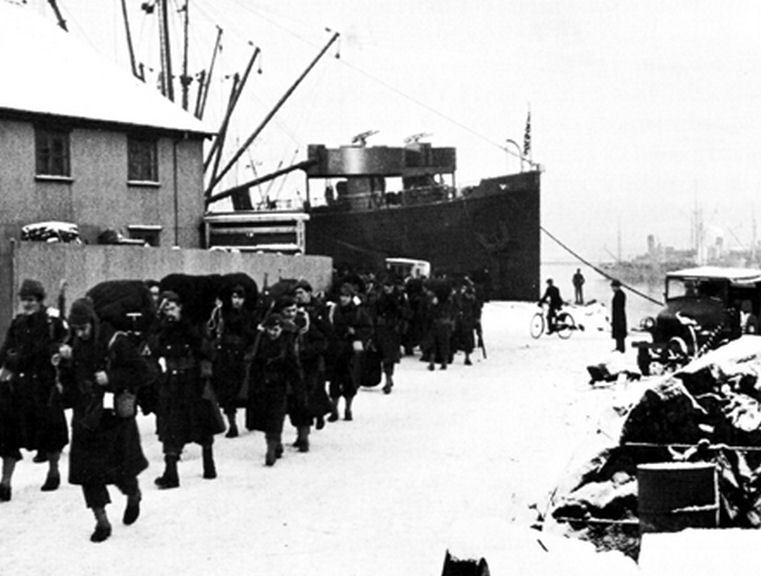

The Population War saw the rapid deployment and evolution of the successor to the venerable Armored Steam Tractor, the ICE Rhino. ICE Rhinos were predominantly heavy petrol armored vehicles with a rotating turret for the main armament (the 'horn' of the Rhino). The combination of the use of ICE Rhinos and the ICEwings in combat ensured from the beginning that the Population War was one of speed and maneuver. While there was some slowing with the initial introduction of chemical warfare to the front lines, especially in the Western European Theatre, ICE Rhinos were quickly equipped with air-scrubbing systems to neutralize the threat (the protective clothes for infantry followed as well though was not as successful, and many a trooper blessed his 'Auntie Atty' Atropine against the nerve agents employed as the war progressed), and of course they had no impact on the war of the air.
The Flag of the Dominion of Southern America during the Population War was developed by the renowned artist from the Province of Albion, Louis Tennyson. The flag was based on the British Empire's Red Ensign, and the coat of arms (featuring prominently the Loyalist Coronet) for the DSA. The supporters emphasize the Dominion's native the alligator as well the shark being an allusion to the fighting nickname of "Shark-Eaters" that the Dominion naval forces earned in the Global War. The motto refers to the Loyalists staying "True to the Crown".

Last edited: